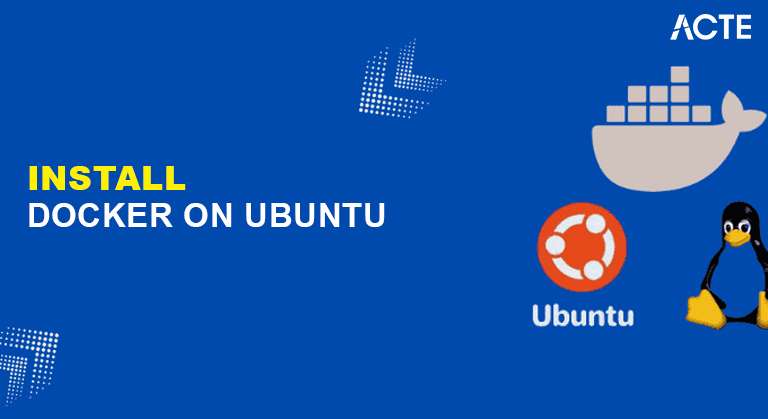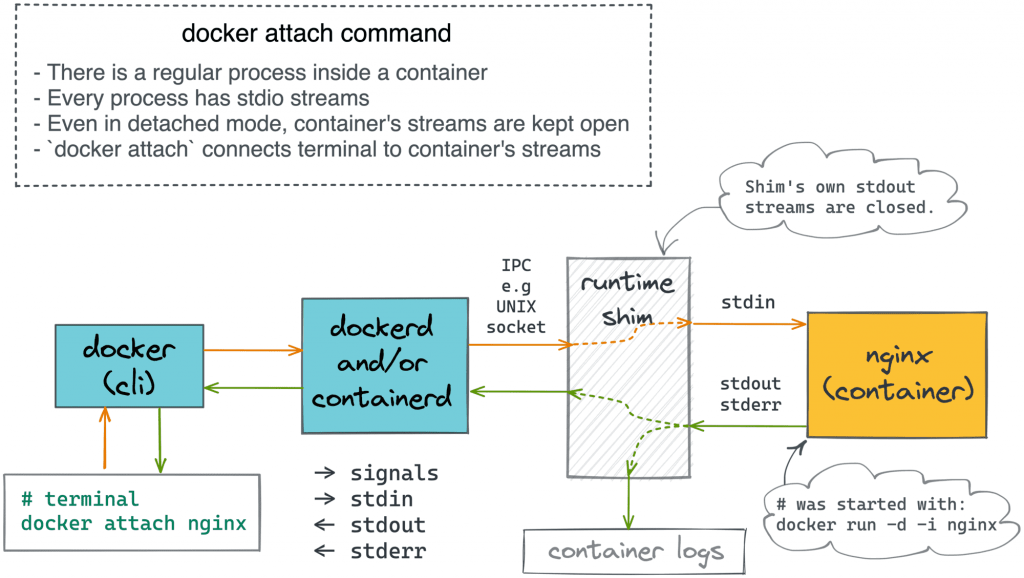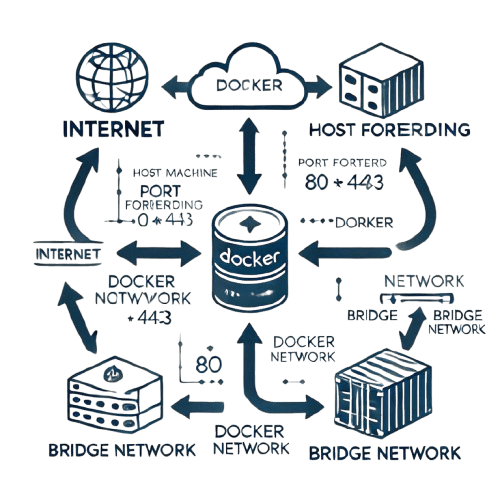
- Introduction to Docker
- Docker: What is it?
- Requirements for Docker Installation on Ubuntu
- Docker Installation on Ubuntu
- Docker Command Execution Without Sudo
- Docker Compose Managing Multi-Container Applications
- Using Docker Files, Images, Containers, and Commands
- Docker Networking Connecting Containers
- Conclusion
Docker on Ubuntu provides a seamless and efficient way to build, package, and deploy applications using containerization. By encapsulating applications and their dependencies into lightweight containers, Docker ensures consistency across different environments, making it an essential tool for developers and system administrators. Ubuntu, being one of the most widely used Linux distributions, offers robust support for Docker, making installation and management straightforward. With Docker, users can eliminate compatibility issues, streamline development workflows, and enhance deployment efficiency. Docker Training simplifies the continuous integration and continuous deployment (CI/CD) process, allowing applications to be tested and deployed rapidly across various platforms. Docker also optimizes resource utilization by running multiple containers on a single host without interfering with each other. Whether you’re deploying microservices, managing cloud applications, or setting up development environments, Docker on Ubuntu provides a scalable and flexible solution to modern software development and deployment challenges.
Dive into Dockers by enrolling in this Docker Training Course today.
Introduction to Docker
The development, packaging, and deployment of programs have all been transformed by Docker. Docker offers a straightforward, effective, and portable method of running programs on any platform by enabling developers to encapsulate applications and their dependencies into containers. Because Ubuntu, one of the most popular Linux distributions, fully supports Docker, developers who want to utilize Docker’s features frequently choose it. Docker enables users to create lightweight, scalable environments that ensure consistency across different systems, reducing compatibility issues. It simplifies AWS SWF Scalable Workflow Automation,accelerates software deployment, and enhances resource efficiency. With Docker, applications can be developed locally and seamlessly deployed to production without modification. In this post, we’ll show you how to install Docker on Ubuntu and provide instructions on how to use it. Whether you’re a beginner or an advanced user, learning Docker will help streamline your development process and improve application portability.
Docker: What is it?
Docker is an open-source technology designed to simplify the deployment, scaling, and management of applications by utilizing lightweight, portable containers. These containers allow developers to package applications with their dependencies, configurations, and libraries into isolated environments. This ensures consistency across different computing environments, eliminating issues caused by system discrepancies. At its core, Docker follows a client-server architecture. The Docker Engine, running on the host machine, serves as the runtime environment for containers. Developers interact with the Docker Containers on AWS using the CLI (Command Line Interface) or through APIs. This approach enables seamless automation of application deployment and management. One of Docker’s primary advantages is its portability. Containers can run reliably on various platforms, whether it’s a developer’s local workstation, an on-premise server, or a cloud-based environment. Additionally, Docker optimizes resource utilization by allowing multiple containers to share the same OS kernel while remaining isolated. This makes Docker a popular choice for microservices architecture, DevOps workflows, and continuous integration/continuous deployment (CI/CD) pipelines.
Unlock your potential in Docker with this Docker Training Course.
Docker Installation on Ubuntu
Follow these simple steps to install Docker on your Ubuntu system:
Step 1: Update the Package DatabaseBefore beginning the installation process, it’s important to update your system’s package index to ensure that you’re installing the latest available version of Docker:
- sudo apt update
Next, you’ll need to install a few packages that allow apt to use packages over HTTPS:
- sudo apt install apt-transport-https ca-certificates curl software-properties-common
To ensure the authenticity of Docker’s official packages, add Docker’s GPG key to your system:
- curl -fsSL https://download.docker.com/linux/ubuntu/gpg | sudo apt-key add –
Add Docker’s official repository to the APT package index:
- sudo add-apt-repository “deb [arch=amd64] https://download.docker.com/linux/ubuntu $(lsb_release -cs) stable”
Now that the Docker repository is added, update the package index once more to ensure that your system can pull from Docker’s official repository:
- sudo apt update
Now, install Docker by running the following command:
- sudo apt install docker-ce
docker-ce stands for Docker Community Edition, which is the free version of Docker.
Step 7: Verify Docker InstallationAfter Docker is installed, verify that it’s running properly with the following command:
- sudo system ctl status docker
If Docker is running, you will see a status message indicating that the Docker service is active.
Requirements for Docker Installation on Ubuntu
Before installing Docker on Ubuntu, it is essential to ensure that your system meets the necessary requirements. First, Docker is compatible with Ubuntu LTS versions 18.04, 20.04, and 22.04, making it ideal for stable and long-term usage. Using an LTS (Long-Term Support) version ensures continued security updates and compatibility with Docker’s features. Additionally, your system must have a 64-bit architecture, as Docker does not support 32-bit systems. Running Docker on a 64-bit Ubuntu system ensures better performance and efficient resource utilization. Another crucial requirement is sudo or root access since installing and managing Docker requires elevated privileges. Without the necessary administrative rights, Docker Training will be unable to execute installation commands or manage containers effectively. Moreover, your system must have a supported Linux kernel version of 3.10 or later, as Docker relies on kernel features such as namespaces and cgroups for containerization. To check your kernel version, use the command uname -r. Ensuring that your Ubuntu system meets these requirements will allow for a smooth installation and operation of Docker. By verifying compatibility in advance, you can avoid potential installation errors and system conflicts, ensuring a seamless experience when working with Docker on Ubuntu.
Docker Command Execution Without Sudo

By default, Docker requires sudo privileges to execute Docker commands. To avoid typing sudo every time you run a Docker command, you can add your user to the Docker group:
- sudo usermod -aG docker $USER
After executing this command, log out and log back in, or restart your machine. You should now be able to run Docker commands without using sudo.
Looking to master Cloud Computing? Sign up for ACTE’s Cloud Computing Master Program Training Course and begin your journey today!
Docker Compose Managing Multi-Container Applications
Docker Compose is a powerful tool that simplifies the management of multi-container applications by using a single configuration file. It allows developers to define services, networks, and volumes in a docker-compose.yml file, making it easier to set up and manage complex applications. Instead of manually running multiple docker run commands for different containers, Getting Started With Docker Pull enables users to launch all services with a single command: docker-compose up. This is particularly useful for applications that require multiple interconnected components, such as a web server, a database, and a caching system. With Compose, developers can specify environment variables, dependencies, and network configurations in an organized manner. It also supports scaling services by running multiple instances of a container. Since Docker Compose abstracts the complexity of container orchestration, it is widely used in development, testing, and staging environments to ensure smooth deployments and consistency across various platforms.
Using Docker Files, Images, Containers, and Commands
Now that Docker is installed on your system, here are some basic Master Docker Entrypoint and commands to get you started:
Docker ImagesDocker images are the blueprints for creating containers. You can either build your own image using a Dockerfile or pull an existing image from Docker Hub (the official repository for Docker images). To pull a Redis image, for example, you can run:
- docker pull redis
A Docker container is an instance of a Docker image. To run a container, use the docker run command. For example, to run a Redis container:
- docker run –name my-redis -d redis
- List Running Containers: docker ps
- Stop a Running Container: docker stop my-redis
- Remove a Container: docker rm my-redis
- Build a Docker Image (using a Dockerfile): docker build -t my-image .
Want to ace your Docker interview? Read our blog on Docker Interview Questions and Answers now!
Docker Networking Connecting Containers
Docker provides built-in networking capabilities that allow containers to communicate with each other or with external networks efficiently. By default, Docker assigns each container an IP address and connects it to a Virtualization in Cloud Computing. There are different network modes, including bridge, host, none, and overlay. The bridge network is the default setting, enabling containers to communicate within the same host. The host network allows a container to share the host’s networking stack, improving performance but reducing isolation.

The none network disables networking for containers, providing maximum security. The overlay network, commonly used in Docker Swarm, facilitates container communication across multiple hosts. Docker also provides the docker network create command to set up custom networks, offering greater control over container interactions. Developers can assign specific IP addresses, configure DNS settings, and use network aliases. Mastering Docker networking is essential for microservices architecture, where multiple containers need seamless and secure communication.
Conclusion
We’ve gone over every step of installing Docker on Ubuntu in this article, from installing the Docker Engine and confirming its installation to adding Docker’s official GPG key and repository. Additionally, Docker Training Course covered fundamental Docker ideas like Docker images and containers and provided tools for working with Docker containers. Now that Docker has been successfully installed on your Ubuntu system, you may fully utilize its benefits for your applications, including scalability, isolation, and ease of deployment. Docker is a game-changer in modern software development, enabling developers to create lightweight, portable, and consistent environments. It simplifies the process of managing dependencies, ensuring that applications run smoothly across various platforms. By leveraging Docker Compose, you can define multi-container applications effortlessly. Moreover, Docker Hub serves as a vast repository for sharing and discovering containerized applications, further enhancing collaboration and efficiency. Building, shipping, and executing apps on any platform is now simpler than ever thanks to Docker, a crucial tool for developers working in DevOps and microservices architecture settings. Whether you are deploying applications in cloud environments or managing on-premise infrastructure, Docker streamlines operations, accelerates development workflows, and ensures reliability across multiple deployments.





